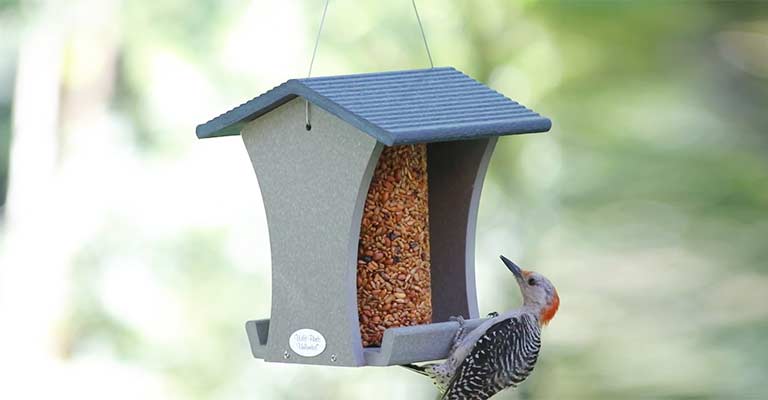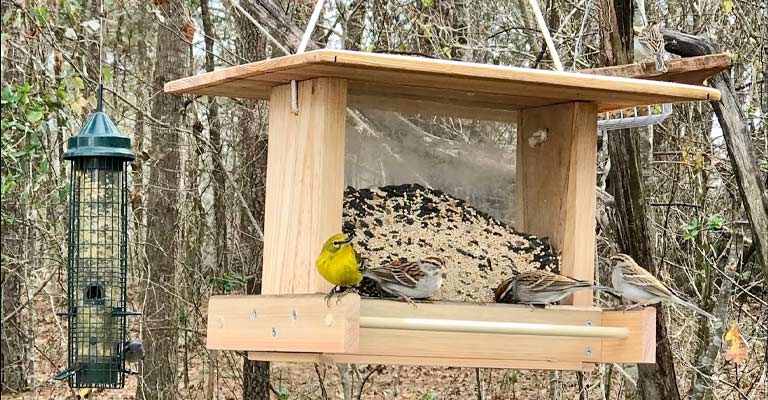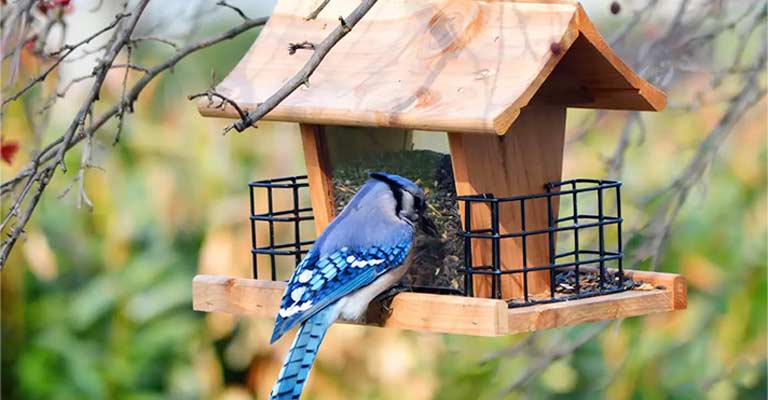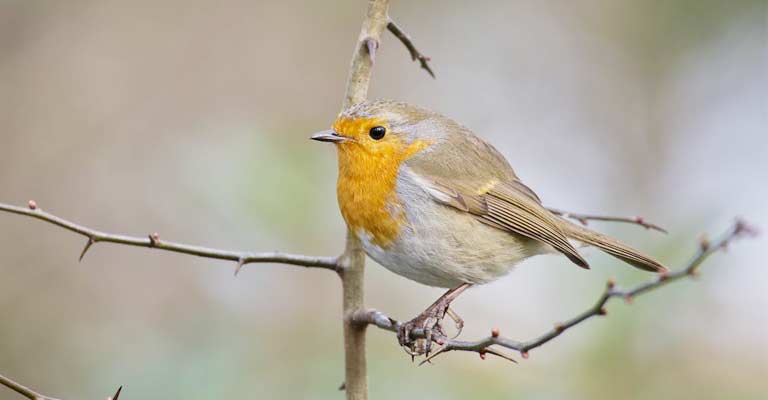In the mesmerizing realm of backyard birdwatching, the enigma of how birds effortlessly locate bird feeders has stirred the curiosity of enthusiasts and scientists alike.
These avian marvels, equipped with what appears to be an intrinsic GPS, embark on remarkable journeys, traversing vast distances to discover even the most discreet feeding stations.
This article delves into how birds find bird feeders. Visual activity, memory and learning, environmental clues, and celestial navigation are some ways birds find bird feeders. Other ways include social learning, migration, and foraging adaptations.
Celestial navigation becomes a celestial roadmap for migrations, showcasing their innate orientation skills. Social learning creates a collective intelligence, fostering communal knowledge exchanges for locating feeders.
Join us on a captivating journey through the rich tapestry of bird cognition and environmental awareness as we unveil the secrets behind birds’ extraordinary ability to locate feeders.

How Birds Find Bird Feeders?
Birds’ ability to find bird feeders is a testament to their remarkable sensory and navigational skills. Understanding the intricacies of this process unveils the captivating world of avian cognition and behavior.
Visual Acuity
Birds are visual experts, often possessing keen eyesight that surpasses that of humans. Their ability to detect colors, patterns, and movements allows them to spot potential food sources from great distances.
Bird feeders, with their vibrant colors and distinctive shapes, become conspicuous landmarks in the avian landscape. This visual acuity is especially crucial during seasons when natural food sources are scarce, prompting birds to rely on artificial feeders.
Memory and Learning
Birds are not only adept at recognizing visual cues but also possess impressive memory and learning abilities. Once a bird discovers a reliable food source, such as a bird feeder, it commits the location to memory.
This learned behavior is then passed on to other members of the flock, creating a network of informed individuals.
Researchers have observed that certain bird species can recall specific locations even after months, showcasing a level of memory retention that aids in their quest for sustenance.
Environmental Clues
Nature provides an intricate tapestry of environmental clues that guide birds to food sources. For instance, the scent of seeds and the presence of other feeding birds leave olfactory markers in the air.
Birds can pick up on these subtle scents and follow the trail to discover a new feeding station. Additionally, the sounds of feeding activity, such as the rhythmic tapping of beaks or the rustling of leaves, serve as auditory signals that attract birds to the vicinity of a bird feeder.
Celestial Navigation
Birds are known for their extraordinary ability to navigate using celestial cues. Sunlight and the Earth’s magnetic field act as reliable guides for many species during migration, but they also play a role in day-to-day movements.
Some birds may use the position of the sun or the Earth’s magnetic field as a compass, allowing them to orient themselves and locate familiar landmarks, including bird feeders, with impressive precision.
Social Learning and Communication

Birds are highly social creatures that learn from observing and interacting with their peers. When one bird successfully discovers a bird feeder, its feeding behavior can attract the attention of nearby birds.
Through this social learning process, other individuals in the community quickly catch on to the location of the feeder. This communal knowledge-sharing enhances the efficiency of finding food sources and establishes a collective intelligence among the bird population.
Migration Patterns
In certain regions, birds follow established migration patterns that lead them to reliable food sources, including bird feeders. These migration routes, passed down through generations, become ingrained in the birds’ instincts.
As seasons change, birds may return to the same feeding stations, guided by an inherited map encoded in their genetic makeup.
Adaptations for Foraging
Bird species have evolved specific adaptations that aid in foraging for food. For example, seed-eating birds often have specialized bills designed to efficiently crack open seeds.
This adaptation not only enables them to access natural food sources but also makes it easier for them to extract seeds from bird feeders.
Over time, these evolutionary traits have fine-tuned birds’ foraging skills, contributing to their ability to locate and utilize artificial feeding stations.
Human Interaction
The presence and behavior of humans can also influence how birds find bird feeders. Birds may associate human activity, such as the opening of doors or the sound of footsteps, with the replenishment of food.
As a result, they become attuned to human routines and are more likely to visit bird feeders when they perceive human presence. This adaptation showcases the remarkable ability of birds to adjust their behavior based on interactions with other species.
Why Do People Make Bird Feeders?

Bird feeders serve as more than just decorative additions to gardens; they embody a collective effort by individuals to nurture and support the avian community.
The motivations behind making bird feeders are diverse, reflecting a blend of environmental consciousness, a love for wildlife, and a desire to create a harmonious coexistence with nature.
Fostering Biodiversity
One of the primary motivations for crafting bird feeders is the desire to enhance biodiversity in local ecosystems. By providing a supplemental food source, individuals attract a variety of bird species to their surroundings.
This intentional act contributes to the preservation of avian diversity, fostering a healthier ecosystem and promoting a balance in local wildlife populations.
Connecting with Nature
Making bird feeders is often a hands-on way for people to connect with the natural world. Engaging in a creative process to design, build, and set up feeders offers a tangible link to the environment.
Observing the subsequent influx of feathered visitors becomes a rewarding experience, creating a sense of connection and appreciation for the intricacies of the avian realm.
Educational Value
Crafting bird feeders provides an educational platform for individuals of all ages. Whether it’s a family project or a solo endeavor, building feeders encourages learning about bird species, their dietary needs, and migratory patterns.
This hands-on education fosters a deeper understanding of the delicate balance within ecosystems and the importance of cohabitating with the diverse fauna that share our surroundings.
Conservation Efforts
Bird feeders play a role in local conservation efforts. As natural habitats face increasing threats, providing supplemental food becomes crucial for the survival of certain bird species.
People who make bird feeders often see their efforts as a small but impactful contribution to the larger conservation picture, helping ensure that birds have access to food resources in times of scarcity.
Enjoyment of Birdwatching

Birdwatching is a popular recreational activity, and bird feeders serve as focal points for this pastime. Crafting feeders and strategically placing them in yards or gardens creates opportunities for individuals to observe and appreciate the diverse behaviors, colors, and songs of visiting birds.
The enjoyment derived from birdwatching adds an enriching dimension to daily life, encouraging moments of tranquility and wonder.
Strengthening Ecological Balance
Bird feeders contribute to ecological balance by supporting birds that play key roles in pest control. Many bird species are natural insectivores, helping control insect populations that might otherwise become nuisances or threats to crops.
By attracting these insect-eating birds, individuals indirectly contribute to maintaining a healthier ecological balance in their immediate surroundings.
Mitigating Seasonal Challenges
During harsh seasons, such as winter, natural food sources for birds can become scarce. Crafting bird feeders becomes a compassionate response to seasonal challenges, providing a lifeline for birds when resources are limited.
This act of kindness not only aids birds in their survival but also allows individuals to actively participate in the well-being of their feathered neighbors.
Promoting Aesthetic Appeal
Beyond their functional purpose, bird feeders contribute to the aesthetic appeal of outdoor spaces. Carefully designed and strategically placed feeders can enhance the beauty of gardens or backyards.
The visual allure of birds fluttering around the feeders adds an element of charm, turning outdoor spaces into vibrant, living landscapes.
The act of making bird feeders embodies a deeper connection between humans and nature. It symbolizes a conscious effort to coexist with and support the delicate ecosystems that surround us.
Whether driven by a passion for biodiversity, a desire for educational experiences, or a simple love for the joyous sights and sounds of birds, those who make bird feeders contribute to a collective effort in nurturing the rich tapestry of life that unfolds just beyond their doorstep.
FAQs
How far can birds detect bird feeders?
Birds, with their exceptional eyesight, can spot bird feeders from several hundred feet away. The vibrant colors and distinct shapes of feeders make them conspicuous in the avian landscape, aiding birds in locating these essential food sources.
Do all bird species use the same methods to find bird feeders?
No, different bird species employ various methods based on their characteristics and adaptations. Some rely heavily on visual cues, while others may navigate using celestial cues or follow learned migration patterns.
Can birds remember the location of bird feeders for an extended period?
Yes, birds exhibit impressive memory retention. Once a bird discovers a reliable food source like a bird feeder, it commits the location to memory. This learned behavior can persist for months, allowing birds to return to the same feeders even after extended periods.
How can I attract more birds to my bird feeder?
To attract a diverse range of birds, consider using a variety of seeds and providing a mix of feeders. Additionally, maintaining a clean feeding area, providing fresh water, and placing feeders in a safe and accessible location can enhance the appeal of different bird species.
Are there specific times of the year when birds rely more on bird feeders?
Birds often rely more on bird feeders during seasons when natural food sources are scarce, such as winter. Providing consistent food during these periods is crucial for supporting the well-being of birds and ensuring they have access to essential nutrients when resources in the environment are limited.
Conclusion
The intricate dance between nature and instinct orchestrates a mesmerizing symphony as birds effortlessly find their way to bird feeders.
The interplay of celestial navigation, visual cues, and memory reveals the remarkable intelligence embedded in our feathered companions.
As we witness the harmonious convergence of science and wonder, it becomes evident that our efforts to provide nourishment to these airborne creatures are met with an ancient reciprocity.
The bond formed at the humble bird feeder is not merely a transaction of sustenance but a testament to the symbiotic relationship between humans and the avian realm.
So, the next time you marvel at a colorful visitor to your backyard feeder, remember that, in this shared space, a silent dialogue unfolds a dialogue that transcends species, reminding us of the interconnected beauty woven into the tapestry of our natural world.